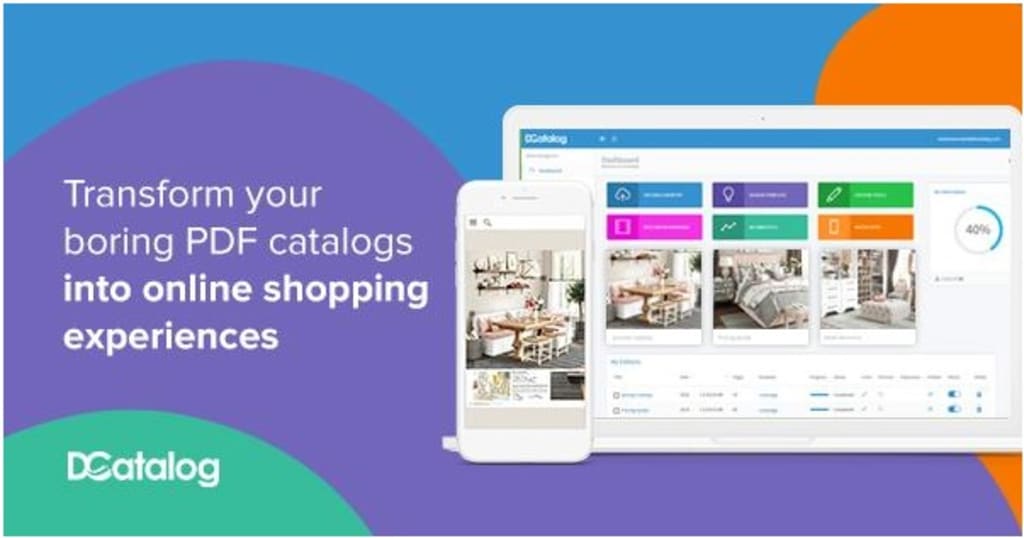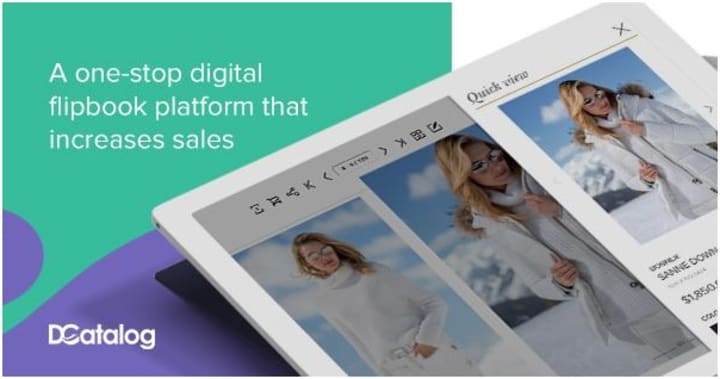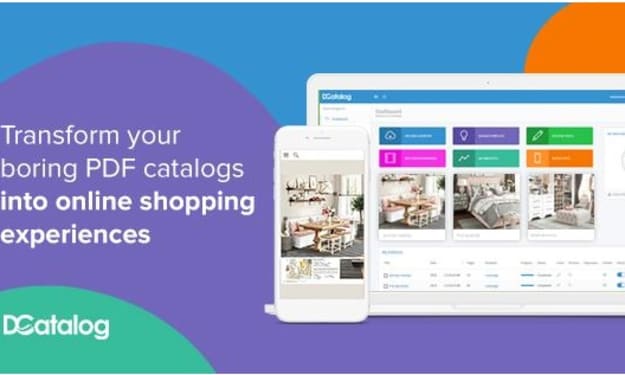How To Design A B2B Catalog That Boost Your Sales & Reach
B2B Catalog Tips

If you’re in the B2B industry you are more than aware of the service or product your clients are seeking, and therefore the demands you must meet. Regardless of the products or services you exchange, you understand that your client’s time, resources, and budget are the key to a successful business partnership. This is why many B2B companies have utilized catalogs and price lists as a method of presenting their products in an engaging yet straightforward manner. Within the last decade, the transition from print to digital catalogs has also demonstrated to be a major influence on B2B companies. The rise of the e-commerce industry – as well as the widespread, everyday use of online platforms – has additionally emphasized the need for digital catalogs; proving that the majority has adapted to the use of digital solutions, as a result of convenience, efficiency, and its overall capabilities. Therefore, now more than ever, it’s essential for B2B companies to not only utilize – but take advantage of the benefits that digital catalogs can provide. Investing in your digital content you can help improve sales and your overall reach, all while providing your customers with an optimized and tailored experience. Therefore, it’s essential to understand how to design a successful B2B digital catalog.
The first factor you should consider when structuring your B2B catalog, is understanding your customers’ buying patterns. This will help you organize and categorize the assortment of products you are presenting. It’s important to try to format your information or products in regards to relevance, as you want to provide an efficient experience, one that prioritizes your customers’ time. This will also capture your customers’ immediate attention, and establish an engaged interaction from the get-go.
Now that we’ve indicated the value in understanding customers buying habits, how can we use this knowledge to structure B2B digital catalogs? The next step is planning the ways in which you can organize your catalog’s content, while keeping in mind the needs and patterns of your customers. Some examples of standard or customary methods of displaying your products are by: product category, brand, or seasonally.
If your customers’ buying patterns are made up of a certain product category - or whether your supply appeals to various industry sectors - organizing by product category/sections may be the most rational and straightforward system. This will allow your customers to easily navigate your catalog, and it is therefore important to ensure the categories you choose are considerate of the industries your collection of products appeal to. For instance, if your merchandise has a very niche clientele - being more specific with your product categories may be more appropriate.

Additionally, you can also go with a combination, and create sub-categories within your catalog. This would be beneficial regardless of your customer base, and especially if you regularly have a large assortment of products within your catalogs.
Companies who have a smaller product catalog, or would like to distinguish self-owned or promotional lines, can perhaps consider arranging by brand. This can be beneficial for those who do not have a variety of categories and/or specialize in a select group of products. With this structure you can highlight your own product lines, and distinguish them from other brands you may offer. Again, this can prove favorable if your customers prefer particular brands, and additionally this can also differentiate your products by industry - for instance, if certain brands correlate with particular/ more specific trades you provide business to.
The last technique that is commonly used to sort products is by season. If you find that certain seasons are dominated by distinct selling patterns, or whether you only carry select products in particular times of the year - this may be an integral element in the way in which you should layout your B2B catalogs. This can provide your customers with a pertinent presentation, saving them time through quick and easy access. If your B2B digital catalogs are designated for certain industries, a seasonal organization can prove to be an efficient method, as many of your clients will be in need of similar products and in similar time periods.
The three product arrangement techniques covered, can be used distinctly and appropriately based on your customers’ buying habits. Alternatively, you may find that the best approach for your clientele is a cross between two of the featured methods. Perhaps you choose to organize your products by brand and create sub-categories based on product type. Keep in mind however, that if you choose to employ a combination of these methods, that the organization is not overly-complicated. Regardless of the categories or subcategories you create, it’s essential to only include the most relevant and applicable headings for your clientele - again, formulating it on the products that you anticipate will be your top sellers. This will demonstrate that you have taken a thoughtful approach, and will allow your customers to shop with ease - ensuring that they will have no difficulty finding the products they need within your catalog.
After you’ve established the method in which you will display your products, the next steps in designing an efficient and profitable catalog require a plan to amplify engagement and relevance. First off, you must include product images for every item featured in your catalogs. Make sure the photos used are professional quality, otherwise your customers will not be confident in the accuracy of what you are offering. A benefit of using digital catalogs also means that you can feature multiple images per product. It’s important that you provide your customers with the most information and detail as possible, so they can trust that you are delivering exactly what they are looking for.
Including product descriptions is another essential component you must include in your B2B catalogs. This will further the information and knowledge your customers have about the products you are selling. For example, you may be selling multiple of one product that have slight differences in dimensions or color in distinctive areas. Having a structured product description will help point out these key differences and make your customers aware – which will prevent any accidental or unwanted purchases that could have easily been avoided. You want your customers to shop with confidence, which is why it is important to include all necessary details as these are the key to providing a tailored and accurate B2B catalog.
Moving beyond all the necessary characteristics needed to ensure a positive online shopping experience – you can now create a plan of action that includes unique tools that are exclusive to digital catalogs. A search functionality tool should be the primary component included in your B2B catalog. With this feature, your customers can search for the exact product they are looking for instantly. This is specifically useful for customers who know exactly what they are looking for – if they know the brand, model, and color of a certain item they need, they can skip straight to it and proceed to checkout, saving loads of time.
This also leads to the utilization of a digital catalog that can employ e-commerce integration. For customers who want a faster checkout, a digital catalog that can allow purchases straight from the catalog itself will set your business apart from the competition. This provides an all-in-one tool for the customer, and saves you the hassle of maintaining and updating the back-end of a website. All-in-all, it creates a unique and simple process in B2B transactions.
Lastly, another tool that goes hand-in-hand with standardized online shopping is an order form or requests a quote feature built in directly to your digital catalog. Allowing your customers to create a quote inquiry, that directly submits to your sales team through your digital catalog, is a convenient method for them to plan if they are not quite ready to checkout.
In order to ensure that your digital catalogs provide a seamless experience, it’s important to first find a solution in the way you organize or categorize your product inventory. Once a layout is planned, your next priority should be to drive engagement with the catalog. This includes the essential elements of any shopping experience, which includes professional product photography and informative, detailed descriptions. The final component is about utilizing a digital catalog solution that provides the tools to take your catalog’s functionality to the next level. This means that your catalog is an all-in-one solution, where your customers can make purchases, submit order or order inquiries, and checkout directly from your catalog. Your digital catalogs will essentially hold all the information of your B2B website, all while showcasing a simplified and more convenient method of shopping for your customers and your own business.
If you feel like your company can benefit from the utilization of B2B catalogs, there is no better time than now to re-invent your catalog planning. If you’re in the e-commerce industry, you are especially sitting on untapped potential with the way in which you present your catalogs. It’s time to strategize your B2B model by harnessing the benefits of digital catalogs to drive revenue - all while appealing to your customers’ needs and demonstrating an innovative approach to the way you do business.
By: vanessa.patino, Customer Success & Content Write
About the Creator
DCatalog
DCatalog helps to transform your content into stunning flip catalogs, magazines, brochures, annual reports, training materials and more, to increase brand awareness, online sales and reach.
Enjoyed the story? Support the Creator.
Subscribe for free to receive all their stories in your feed. You could also pledge your support or give them a one-off tip, letting them know you appreciate their work.






Comments
There are no comments for this story
Be the first to respond and start the conversation.